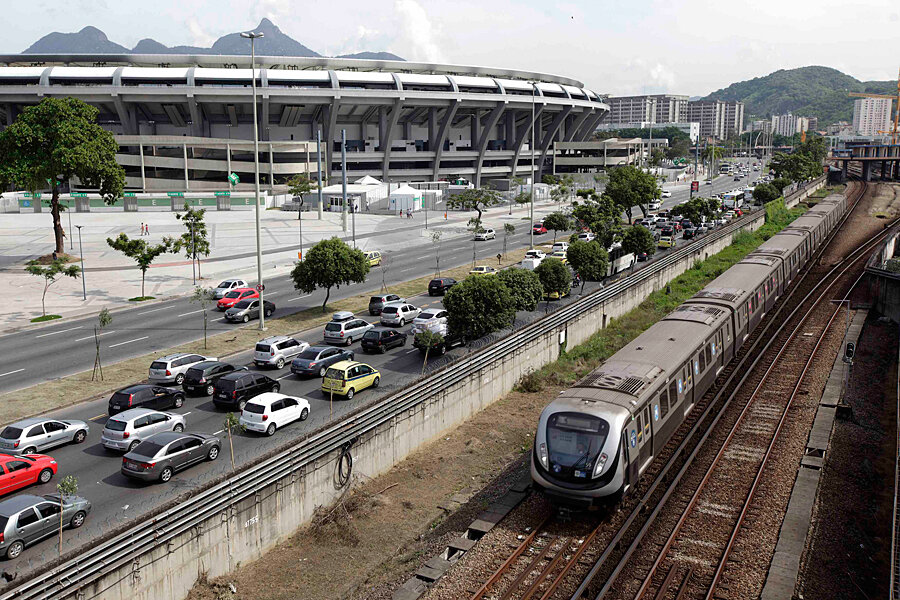Brazil: Will subway fare hikes in Rio mean more protests?
Loading...
A version of this post ran on the author's blog, Riogringa. The views expressed are the author's own.
This past week, Rio experienced a three-day bus strike, affecting close to a million workers in the city and leading to commercial losses of around R$700 million (about $317 million). And though buses are now operating again, Rio commuters will see another change starting [today]: subway and train fares are going up.
On May 19, subway fares rise to R$3.50 (about $1.60), a 9 percent increase, and train fares go up R$3.20 (about $1.45), a 10 percent increase. To make matters worse, the city's train operator, Supervia, already stopped selling metro cards for those taking the train into the city, causing huge lines at Central Station when I was there in April. During rush hour, metro employees were accepting exact cash amounts at the turnstiles to let people avoid the ticket line.
But given last year's nationwide protests sparked in part by transport fare hikes, the government is offering a compromise. (Also because bus fares went up in February.) It's been heavily promoting the Bilhete Único, a rechargeable card that works on most of the city's buses, as well as trains, subways, ferries, and legal vans. For those using this card, fares won't go up for the train or the subway, and the government will subsidize the difference. In a bid to have fewer people affected by the fare hike, the government dispatched workers to sign people up at train and subway stations. Around 3.7 million people already use the Bilhete Único.
But even with a Bilhete Único, Cariocas [people living in Rio] who have to commute long distances may end up paying more for two reasons. The first is if their commute is really long, since there are time limits for transfers of between 2.5 and 3 hours. The second is if their commute includes buses or illegal vans not included in the card, common for those with long commutes that depend on multiple forms of transportation. For those who don't live walking distance to train or metro stations, multiple buses may be necessary, or paying cash for vans. And without the Bilhete Único, getting around can get expensive and exhausting. For example, staying in Zona Oeste in April, I spent around R$18 (about $8.20) round trip to get to Ipanema, spending over four hours in total on a van, bus, train, and metro.
Will these fare hikes result in protests like last year? There were some small protests in January before the bus fare hike, but big transportation protests in Rio don't seem likely at the moment. But the fare increases are another source of annoyance for Cariocas frustrated by expensive and insufficient transportation system, as well as an increasing cost of living in the Olympic City.







